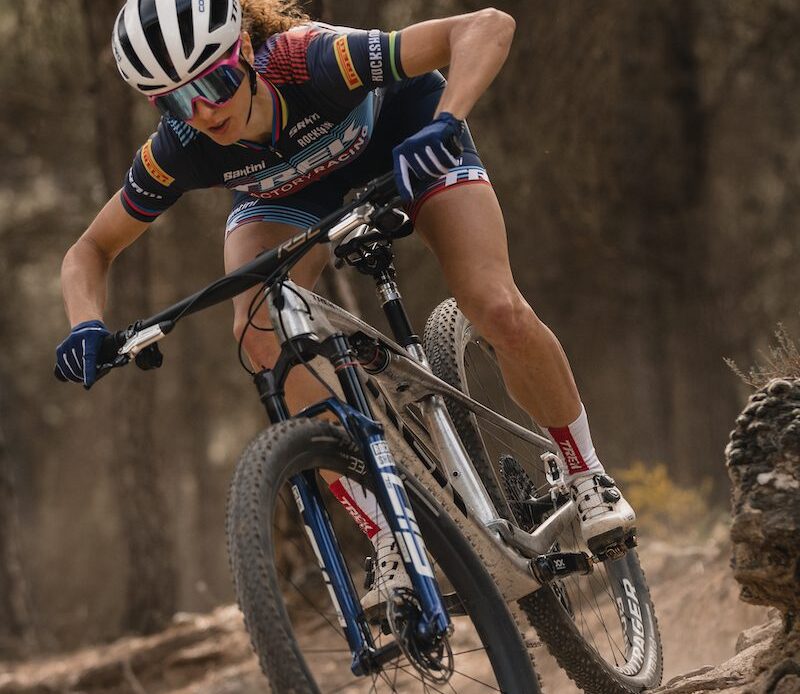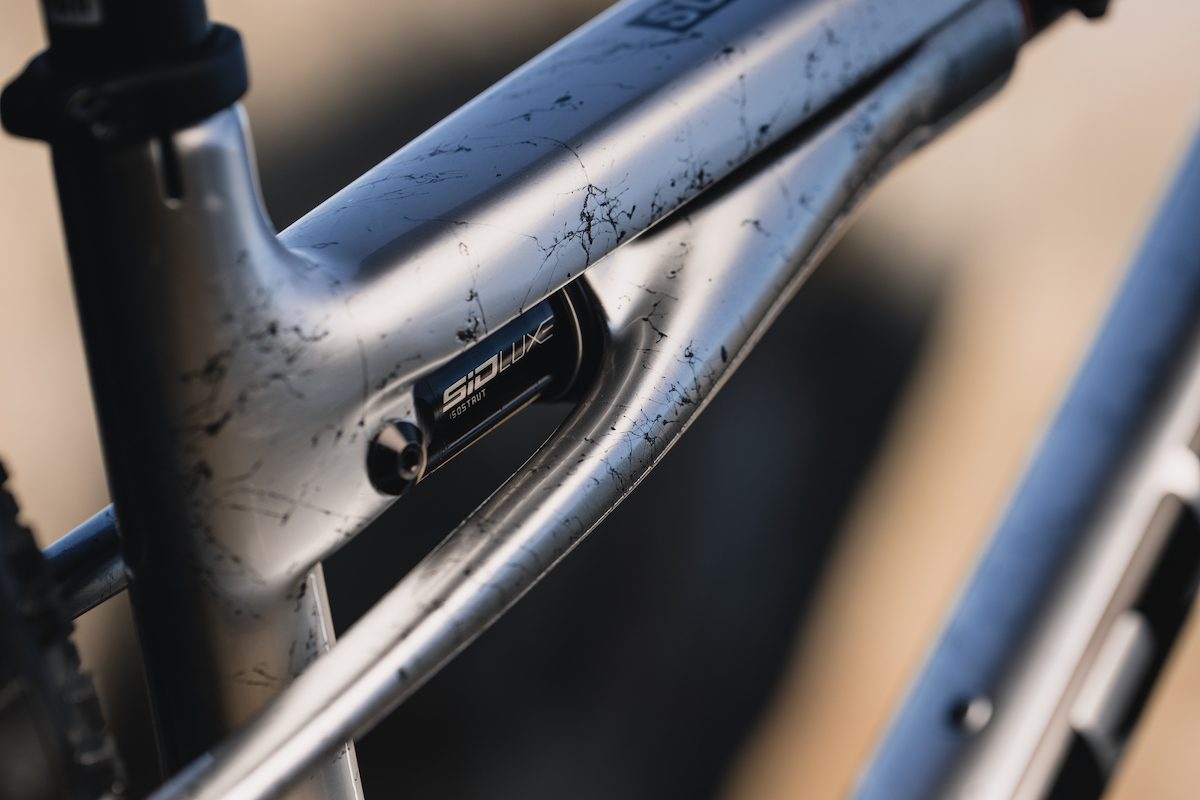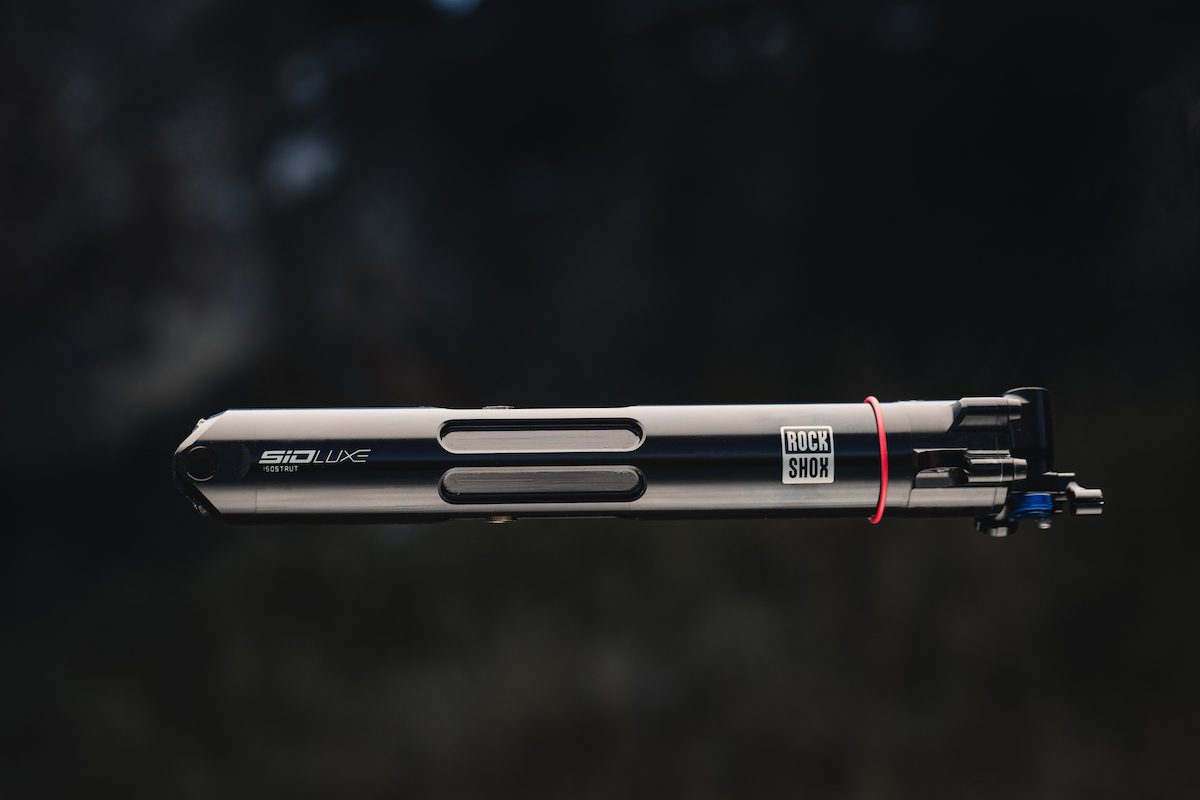When Trek first released the Supercaliber, it flew in the face of a growing trend towards more travel and slacker XC bikes. Rolling out a full suspension bike that aimed to mimic a hardtail certainly turned heads. Then, shortly after Trek released its short-travel XC race specialist, the Supercaliber, the bike struck gold at the Tokyo Olympics under Jolanda Neff. That concept, or that result, have since inspired designs that are strikingly similar. So how does Trek stay ahead of the curve?
More importantly, what is Trek calling the second version of its superlative XC race whip? Super-duper-caliber? Superestcaliber? Moresupercaliber? Supremecaliber? Or, for the sake of simplicity, just the new Supercaliber. Not any more superlative, but Supercaliber might just make up for that on its own.
Supercaliber Gen. 2: What’s new?
The Gen 2 Supercaliber is still very much a bike created for World Cup cross country racing. It is very single-mindedly focused on winning cross country races at the highest level. So what has changed? Quite a few things, actually.
More travel
First, there is more travel. Trek ups the travel front and rear, slightly, to make the Supercaliber a little more capable. It’s still less than most modern cross country races, but there’s now 80mm of rear wheel travel instead of 60 and the option for 110mm front forks instead of 100mm. Still minimalist, for sure, but with a bit more give than before.
A 2,030-gram SLR frame
The frame now comes in a SLR and SL option and the distinctive IsoStrut shock is redesigned to be more user-friendly. Finally, Trek softens the geometry a little bit to be less extreme than the first-gen Supercaliber.
While the SL frame is about the same weight as the first-gen Supercal, the new SLR drops a full 200 grams. That’s no small number in the weight-weenie world of XCO racing. Trek sheds those grams through a mix of frame material refinements (less material, higher-modulus) and, since most SLR frames use wireless drivetrains, no internal cable routing. The 9.8 and 9.9 models use the SLR frame, which is now just 2,030 grams, while the 9.6 and 9.7 use the SL frame with all the other updates to geo, shock and travel.
New SidLuxe IsoStrut shock
The new Supercaliber moves from the original Fox IsoStrut shock to a new RockShox SidLuxe shock. Trek says the new shock is easier to service, requiring four M5 bolts and no clocking to install, without adding weight. The new design also has a more linear shock…
Click Here to Read the Full Original Article at Canadian Cycling Magazine…



